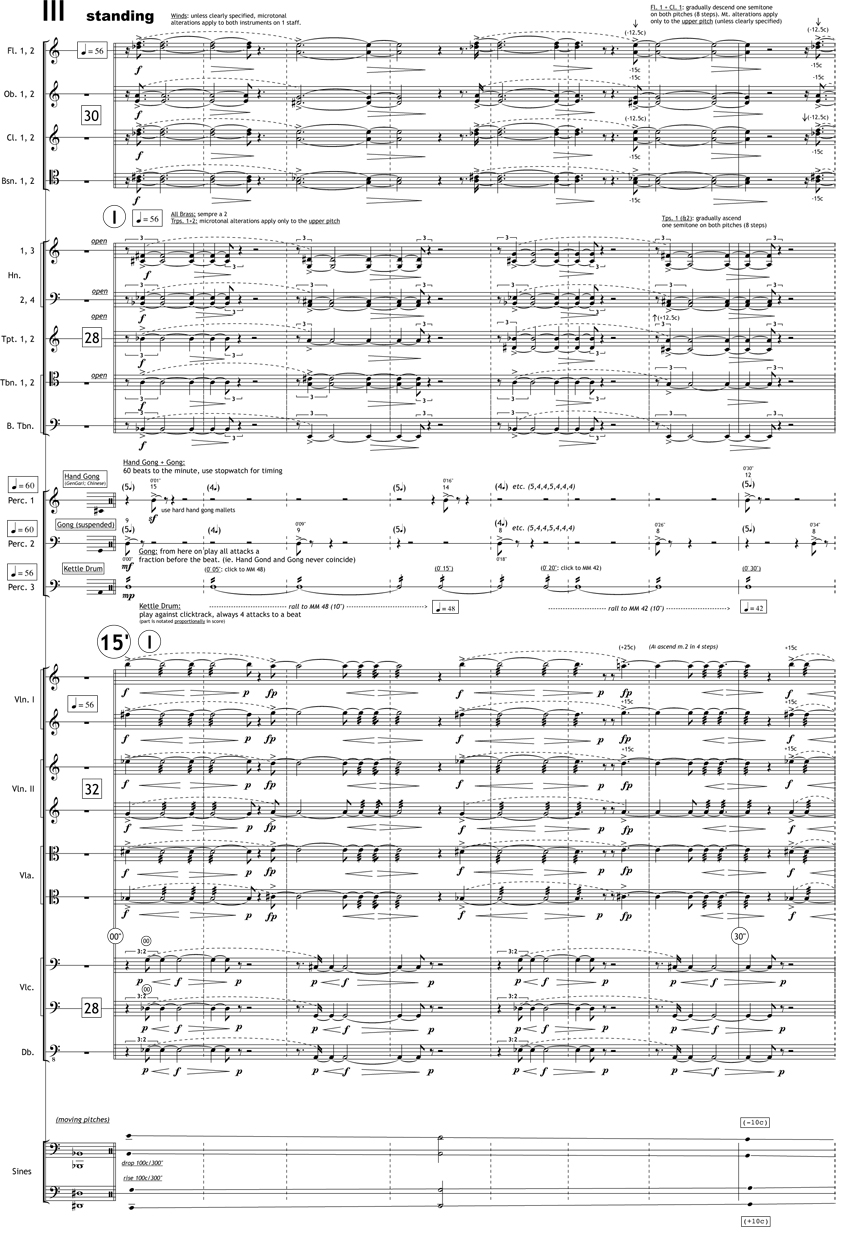No 54 Rising & Falling (2012-13)
For orchestra & sinewaves
Commissioned by: Vara Matinee, with financial support from the Netherlands Fund for the Performing Arts
First Performance: Netherlands Radio Chamber Philharmonic Orchestra, Vara Matinee May 18 2013, Concertgebouw, Amsterdam, Clark Rundell conductor
Instrumentation: Orchestra (2222 – 4221 – 4 – 12-10-8-6-4) & Sinewaves
Duration: ca. 20’
Special Features: Performance requires sound engineer & click track in pt. III
Info/Program note:
Rising & Falling takes various technical features of recent works (more particularly Phrase, Shadings and Three Vertical Swells) and combines these into a single piece for orchestra. The work consists of three movements, each lasting somewhere between six to seven minutes and titled consecutively Rising, Falling and Standing. The movements basically do as the titles imply, though mostly in a shrouded form.
Rising is based on some of the melodic looping techniques developed in pieces like Phrase and the Scala series, but executed in this case on a sonically more grand scale. The melody slows down imperceptibly to the midpoint and then retrogrades while a hidden melody, embedded at the center of the harmony simultaneously ascends and then descends again. Falling is a development of the technique used in the second part of Shadings, with harmonic chords taking their cue from the sinewaves and either immediately sliding downwards (strings) or upwards (winds), thereby creating an interplay between seufzer-like gestures and aspirational gestures; tugging away at the center - but generally with an overall sagging feeling. Standing is something of a compromise between the two preceding parts. The pitch centers are clear again and the movement revolves around two ominous somewhat fin-de-siecle oscillating chords, divided over strings, winds and brass, which are however proportionally displaced per group. Like Rising and Falling, Standing also pursues an internal paradox whereby ‘chord’ and ‘echo’ (the so-called ‘aftertone’ in oriental practice) become obscured: the movement retrogrades and what was an ‘echo’ starts becoming a ‘pre echo’, until the process has gradually restored itself again by the end of the piece.


